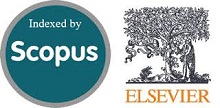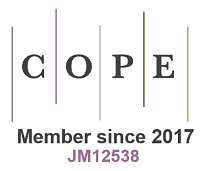Numerical Analysis of Time-Dependent Strength and Stiffness in Palm Oil Fuel Ash-Stabilized Soil: Early and Long-Term Effects
Abstract
Â
Doi: 10.28991/CEJ-SP2024-010-05
Full Text: PDF
Keywords
References
Saleh, S., Mohd Yunus, N. Z., Ahmad, K., & Mat Said, K. N. (2021). Numerical simulation with hardening soil model parameters of marine clay obtained from conventional tests. SN Applied Sciences, 3(2), 156. doi:10.1007/s42452-020-04115-w.
Sabetamal, H., Sheng, D., Carter, J. (2021). Advanced Soil Constitutive Models and Their Applications to Offshore Geotechnical Problems. Challenges and Innovations in Geomechanics, IACMAG 2021, Lecture Notes in Civil Engineering, 126, Springer, Cham, Switzerland. doi:10.1007/978-3-030-64518-2_116.
Onyelowe, K. C., Ebid, A. M., Ramani Sujatha, E., Fazel-Mojtahedi, F., Golaghaei-Darzi, A., Kontoni, D. P. N., & Nooralddin-Othman, N. (2023). Extensive overview of soil constitutive relations and applications for geotechnical engineering problems. Heliyon, 9(3), e14465. doi:10.1016/j.heliyon.2023.e14465.
Karim, M. R., & Gnanendran, C. T. (2014). Review of constitutive models for describing the time dependent behavior of soft clays. Geomechanics and Geoengineering, 9(1), 36–51. doi:10.1080/17486025.2013.804212.
Karstunen, M., & Yin, Z. Y. (2010). Modelling time-dependent behavior of Murro test embankment. Geotechnique, 60(10), 735–749. doi:10.1680/geot.8.P.027.
Baskari, T. L., Zakaria, Z., Sulaksana, N., & Muljana, B. (2021). Study On Rheological Constitutive Model Of Cililin Volcanic Clay, Indonesia In Relation To Long-Term Slope Stability. International Journal of GEOMATE, 21(86), 40–47. doi:10.21660/2021.86.j2269.
Teshager, D. K., & Belayneh, H. L. (2022). Reviews on Finite Element Modeling Practices of Stone Columns for Soft Soil Stabilization Beneath an Embankment Dam. Studia Geotechnica et Mechanica, 44(4), 343–353. doi:10.2478/sgem-2022-0024.
Sternik, K. (2017). Elasto-plastic Constitutive Model for Overconsolidated Clays. International Journal of Civil Engineering, 15(3), 431–440. doi:10.1007/s40999-017-0193-8.
Mohammed, A. S., & Vipulanandan, C. (2014). Compressive and Tensile Behavior of Polymer Treated Sulfate Contaminated CL Soil. Geotechnical and Geological Engineering, 32(1), 71–83. doi:10.1007/s10706-013-9692-9.
Ikeagwuani, C. C., & Nwonu, D. C. (2019). Emerging trends in expansive soil stabilisation: A review. Journal of Rock Mechanics and Geotechnical Engineering, 11(2), 423–440. doi:10.1016/j.jrmge.2018.08.013.
Jiang, Y., Han, J., & Zheng, G. (2013). Numerical analysis of consolidation of soft soils fully-penetrated by deep-mixed columns. KSCE Journal of Civil Engineering, 17(1), 96–105. doi:10.1007/s12205-013-1641-x.
Tsige, D., Korita, M., & Beyene, A. (2022). Deformation analysis of cement modified soft clay soil using finite element method (FEM). Heliyon, 8(6), e09613. doi:10.1016/j.heliyon.2022.e09613.
Abdullah, G. M. S., & El Aal, A. A. (2021). Assessment of the reuse of Covid-19 healthy personal protective materials in enhancing geotechnical properties of Najran’s soil for road construction: Numerical and experimental study. Journal of Cleaner Production, 320, 128772 . doi:10.1016/j.jclepro.2021.128772.
Jassim, N. W., Hassan, H. A., Mohammed, H. A., & Fattah, M. Y. (2022). Utilization of waste marble powder as sustainable stabilization materials for subgrade layer. Results in Engineering, 14, 100436. doi:10.1016/j.rineng.2022.100436.
Negesa, A. B., Gebretsadik, H. M., & Miju, R. B. (2023). Deformation Response of Sensitive Clay Reinforced with Recycled High-Density Polyethylene Plastic Polymer Chips: Experimental and Numerical Analysis, 1-19. doi:10.2139/ssrn.4340001.
Adithan, K., Neethi Chandra, A., Reddy, T. L. G., Vaishnao Vignesh, G., Sharma, A., & Ramkrishnan, R. (2021). Numerical Analysis of Soil Reinforcement using Geocell infilled with Quarry Dust Powder. Journal of Physics: Conference Series, 2070(1), 012189. doi:10.1088/1742-6596/2070/1/012189.
Robin, V., Cuisinier, O., Masrouri, F., & Javadi, A. A. (2014). Chemo-mechanical modelling of lime treated soils. Applied Clay Science, 95, 211–219. doi:10.1016/j.clay.2014.04.015.
Nguyen, L., Fatahi, B., & Khabbaz, H. (2016). Predicting the Behavior of Fibre Reinforced Cement Treated Clay. Procedia Engineering, 143, 153–160. doi:10.1016/j.proeng.2016.06.020.
Abdullah, G. M. S. (2019). 3D finite element modeling to predict the foamed sulfur asphalt marl soil mixes rutting behavior. Ain Shams Engineering Journal, 10(4), 661–668. doi:10.1016/j.asej.2019.03.005.
Li, X. (2014). Shrinkage cracking of soils and cementitiously-stabilized soils: Mechanisms and modeling. Ph.D. Thesis, Washington State University, Washington, United States.
Mahvash-mohammadi, S. (2017). The Utilization of Fly Ash for Ground Improvement. Ph.D. Thesis, University of West London, London, United Kingdom.
Shaalan, H. H., Azit, R., & Mohamad Ismail, M. A. (2018). Numerical Analysis of TBM Tunnel Lining Behavior using Shotcrete Constitutive Model. Civil Engineering Journal, 4(5), 1046. doi:10.28991/cej-0309155.
Schütz, R., Potts, D. M., & Zdravkovic, L. (2011). Advanced constitutive modelling of shotcrete: Model formulation and calibration. Computers and Geotechnics, 38(6), 834–845. doi:10.1016/j.compgeo.2011.05.006.
Paternesi, A., Schweiger, H. F., Ruggeri, P., Fruzzetti, V. M. E., & Scarpelli, G. (2017). Comparisons of Eurocodes design approaches for numerical analysis of shallow tunnels. Tunnelling and Underground Space Technology, 62, 115–125. doi:10.1016/j.tust.2016.12.003.
Waichita, S., Jongpradist, P., & Schweiger, H. F. (2020). Numerical and experimental investigation of failure of a DCM-wall considering softening behavior. Computers and Geotechnics, 119, 103380. doi:10.1016/j.compgeo.2019.103380.
Ong, Q.J. & Tan, S.A. (2019). Collapse of an excavation utilizing cement-treated soil columns and lessons learnt. 16th Asian Regional Conference on Soil Mechanics and Geotechnical Engineering (16th ARC), Taipei, Taiwan.
Hung, H.M., Cheang, W., Long, P.D., Tuan, N.A. (2020). Simulation of Cement-Treated Soils Considering Softening Behavior. Geotechnics for Sustainable Infrastructure Development, Lecture Notes in Civil Engineering, 62, Springer, Singapore. doi:10.1007/978-981-15-2184-3_134.
Maatkamp, T. W. P. (2016). The capabilities of the Plaxis Shotcrete material model for designing laterally loaded reinforced concrete structures in the subsurface. Master Thesis, Delft University of Technology, Delft, Netherlands.
Çelik, S., Majedi, P., & Akbulut, S. (2019). Granular Soil Improvement by Using Polyester Grouts. Iranian Journal of Science and Technology - Transactions of Civil Engineering, 43(3), 599–606. doi:10.1007/s40996-018-0203-3.
Zheng, X., & Wu, J. (2021). Early Strength Development of Soft Clay Stabilized by One-Part Ground Granulated Blast Furnace Slag and Fly Ash-Based Geopolymer. Frontiers in Materials, 8. doi:10.3389/fmats.2021.616430.
Ratchakrom, C. (2019). The effect of bottom ash and kaolin on the strength of poor subbase. International Journal of GEOMATE, 16(57), 76–81. doi:10.21660/2019.57.4665.
Yang, Y., Ruan, S., Wu, S., Chu, J., Unluer, C., Liu, H., & Cheng, L. (2021). Biocarbonation of reactive magnesia for soil improvement. Acta Geotechnica, 16(4), 1113–1125. doi:10.1007/s11440-020-01093-6.
Soltani, A., Tarighat, A., & Varmazyari, M. (2018). Calcined Marl and Condensed Silica Fume as Partial Replacement for Ordinary Portland Cement. International Journal of Civil Engineering, 16(11), 1549–1559. doi:10.1007/s40999-018-0289-9.
Ezreig, A. M. A., Ismail, M. A. M., & Ehwailat, K. I. A. (2022). A state of review: challenges and techniques of laterite soil stabilisation using chemical, economical, and eco-friendly materials. Innovative Infrastructure Solutions, 7(3), 229. doi:10.1007/s41062-022-00821-z.
Gorde, P., Bendale, D., Sawkar, N., Dhonddev, S., Kanade, S., & Bhoye, D. (2024). Review on Fibres Used in Bituminous Pavement and Their Behaviors. EasyChair Preprint 11740, Manchester, United Kingdom.
Fawaz, A., Alhakim, G., & Jaber, L. (2024). The stabilisation of clayey soil by using sawdust and sawdust ash. Environmental Technology, 1–11. doi:10.1080/09593330.2024.2304674.
Atiqah Abdul Azam, F., Bt Che Omar, R., Bte Roslan, R., Baharudin, I. N. Z., & Muchlas, N. H. M. (2024). Enhancing the soil stability using biological and plastic waste materials integrated sustainable technique. Alexandria Engineering Journal, 91, 321–333. doi:10.1016/j.aej.2024.02.016.
Mahmood, A. A., Hussain, M. K., & Ali Mohamad, S. N. (2020). Use of palm oil fuel ash (POFA)-stabilized Sarawak peat composite for road subbase. Materials Today: Proceedings, 20, 505–511. doi:10.1016/j.matpr.2019.09.178.
Abdeldjouad, L., Asadi, A., Nahazanan, H., Huat, B. B. K., Dheyab, W., & Elkhebu, A. G. (2019). Effect of Clay Content on Soil Stabilization with Alkaline Activation. International Journal of Geosynthetics and Ground Engineering, 5(1), 4. doi:10.1007/s40891-019-0157-y.
Sukmak, P., Sukmak, G., Horpibulsuk, S., Setkit, M., Kassawat, S., & Arulrajah, A. (2019). Palm oil fuel ash-soft soil geopolymer for subgrade applications: strength and microstructural evaluation. Road Materials and Pavement Design, 20(1), 110–131. doi:10.1080/14680629.2017.1375967.
Ezreig, A. M. A., Mohamad Ismail, M. A., & Azarroug Ehwailat, K. I. (2023). Geotechnical performance of tropical laterite soil using palm oil fuel ash and activator magnesium oxide stabilizer. Physics and Chemistry of the Earth, Parts A/B/C, 129, 103293. doi:10.1016/j.pce.2022.103293.
ISO 17892-4:2016. (2016). Standards Publication Geotechnical Investigation and Testing—Laboratory Testing of Soil Part 4: Determination of Particle Size. International Organization for Standardization (ISO), Geneva, Switzerland.
Bozkurt, S., Abed, A., & Karstunen, M. (2023). Finite element analysis for a deep excavation in soft clay supported by lime-cement columns. Computers and Geotechnics, 162, 105687. doi:10.1016/j.compgeo.2023.105687.
Fattah, M. Y., Ismael, R. H., & Aswad, M. F. (2021). Dispersion characteristics of MgO-treated dispersive clay. Arabian Journal of Geosciences, 14(7), 605. doi:10.1007/s12517-021-06957-z.
Saadeldin, R., & Siddiqua, S. (2013). Geotechnical characterization of a clay-cement mix. Bulletin of Engineering Geology and the Environment, 72(3–4), 601–608. doi:10.1007/s10064-013-0531-2.
Mohammed Al-Bared, M. A., & Marto, A. (2017). A review on the geotechnical and engineering characteristics of marine clay and the modern methods of improvements. Malaysian Journal of Fundamental and Applied Sciences, 13(4), 825–831. doi:10.11113/mjfas.v13n4.921.
Khasib, I. A., Daud, N. N. N., & Nasir, N. A. M. (2021). Strength development and microstructural behavior of soils stabilized with palm oil fuel ash (POFA)-based geopolymer. Applied Sciences, 11(8), 3572. doi:10.3390/app11083572.
Zhou, Y., Wang, Y., Yu, K., Feng, S., Zhang, H., & Zhao, J. (2023). Synergistic flame retardancy of piperazine pyrophosphate/magnesium hydroxide/fly ash cenospheres-doped rigid polyurethane foams. Construction and Building Materials, 408, 133670. doi:10.1016/j.conbuildmat.2023.133670.
ASTM D2166/D2166M-16. (2013). Standard Test Method for Unconfined Compressive Strength of Cohesive Soil. ASTM International, Pennsylvania, United States. doi:10.1520/D2166_D2166M-16.
Jiang, N., Wang, C., Wang, Z., Li, B., & Liu, Y. A. (2021). Strength characteristics and microstructure of cement stabilized soft soil admixed with silica fume. Materials, 14(8), 1929. doi:10.3390/ma14081929.
Haeri, S. M., & Valishzadeh, A. (2021). Evaluation of Using Different Nanomaterials to Stabilize the Collapsible Loessial Soil. International Journal of Civil Engineering, 19(5), 583–594. doi:10.1007/s40999-020-00583-8.
Saadat, M., & Bayat, M. (2022). Prediction of the unconfined compressive strength of stabilized soil by Adaptive Neuro Fuzzy Inference System (ANFIS) and Non-Linear Regression (NLR). Geomechanics and Geoengineering, 17(1), 80–91. doi:10.1080/17486025.2019.1699668.
Wang, Y., Zhao, Y., Han, Y., & Zhou, M. (2022). The effect of circulating fluidised bed bottom ash content on the mechanical properties and drying shrinkage of cement-stabilized soil. Materials, 15(1), 14. doi:10.3390/ma15010014.
Bayat, M., Asgari, M. R., & Mousivand, M. (2013). Effects of cement and lime treatment on geotechnical properties of a low plasticity clay. International Conference on Civil Engineering Architecture & Urban Sustainable Development, 27-28 November, Tabriz, Iran.
Elmannaey, A. S., Fouad, H. E. E., & Youssef, Y. G. (2021). Improvement of swelling chlorite soil using sodium silicate alkali activator. Ain Shams Engineering Journal, 12(2), 1535–1544. doi:10.1016/j.asej.2020.10.019.
Kim, A. R., Chang, I., Cho, G. C., & Shim, S. H. (2018). Strength and Dynamic Properties of Cement-Mixed Korean Marine Clays. KSCE Journal of Civil Engineering, 22(4), 1150–1161. doi:10.1007/s12205-017-1686-3.
Gudissa Lemu, D., & Verma, R. K. (2018). Compacted Behavior of Cement Stabilized Lateritic Soil And Its Economic Benefit Over Selective Borrow Material In Road Construction: A Case Study In Wolayita Sodo. World Journal of Engineering Research and Technology WJERT, 4(2), 1-34.
Saing, Z., Samang, L., Harianto, T., & Patanduk, J. (2017). Mechanical characteristic of ferro laterite soil with cement stabilization as a subgrade material. International Journal of Civil Engineering and Technology, 8(3), 609–616.
Yusuf, H., Pallu, M. H., Samang, L., & Tjaronge, M. W. (2012). Characteristical analysis of unconfined compressive strength and CBR laboratory on dredging sediment stabilized with Portland cement. International Journal of Civil & Environmental Engineering, 12(04), 25-31.
Pongsivasathit, S., Horpibulsuk, S., & Piyaphipat, S. (2019). Assessment of mechanical properties of cement stabilized soils. In Case Studies in Construction Materials, 11, e00301. doi:10.1016/j.cscm.2019.e00301.
Wahab, N. A., Roshan, M. J., Rashid, A. S. A., Hezmi, M. A., Jusoh, S. N., Norsyahariati, N. D. N., & Tamassoki, S. (2021). Strength and durability of cement-treated lateritic soil. Sustainability, 13(11), 6430. doi:10.3390/su13116430.
Eyo, E. U. (2020). Performance of expansive soils stabilized by cementitious binders and inclusion of a nanotechnology-based additive Ph.D. Thesis, Coventry University, Coventry, United Kingdom.
Yong, L. L., Perera, S. V. A. D. N. J., Syamsir, A., Emmanuel, E., Paul, S. C., & Anggraini, V. (2019). Stabilization of a residual soil using calcium and magnesium hydroxide nanoparticles: A quick precipitation method. Applied Sciences, 9(20), 4325. doi:10.3390/app9204325.
Al-Duais, I. N., Ahmad, S., Al-Osta, M. M., Maslehuddin, M., Saleh, T. A., & Al-Dulaijan, S. U. (2023). Optimization of alkali-activated binders using natural minerals and industrial waste materials as precursor materials. Journal of Building Engineering, 69, 106230. doi:10.1016/j.jobe.2023.106230.
PLAXIS (2018). Plaxis Connect Edition V22.02 PLAXIS 2D-Reference Manual. 2D Geotechnical Engineering Software, Bentley Systems, Pennsylvania, United States.
PLAXIS (2022). Plaxis Material Models Connect Edition V22.01. Bentley Systems, Pennsylvania, United States.
Yu, Y., Damians, I. P., & Bathurst, R. J. (2015). Influence of choice of FLAC and PLAXIS interface models on reinforced soil–structure interactions. Computers and Geotechnics, 65, 164-174. doi:10.1016/j.compgeo.2014.12.009.
Yapage, N. N. S., & Liyanapathirana, D. S. (2019). A review of constitutive models for cement-treated clay. International Journal of Geotechnical Engineering, 13(6), 525–537. doi:10.1080/19386362.2017.1370878.
Vinoth, M., Prasad, P. S., & Guru Vittal, U. K. (2019). Performance analysis of PLAXIS models of stone columns in soft marine clay. Geotechnics for Transportation Infrastructure: Recent Developments, Upcoming Technologies and New Concepts, Volume 2, 557-569. doi:10.1007/978-981-13-6713-7_44.
Yaro, N. S. A., Bin Napiah, M., Sutanto, M. H., Usman, A., & Saeed, S. M. (2021). Performance evaluation of waste palm oil fiber reinforced stone matrix asphalt mixtures using traditional and sequential mixing processes. Case Studies in Construction Materials, 15, e00783. doi:10.1016/j.cscm.2021.e00783.
Jafer, H., Atherton, W., Sadique, M., Ruddock, F., & Loffill, E. (2018). Stabilisation of soft soil using binary blending of high calcium fly ash and palm oil fuel ash. Applied Clay Science, 152, 323-332. doi:10.1016/j.clay.2017.11.030.
Ghiasi, V., & Eskandari, S. (2023). Comparing a single pile's axial bearing capacity using numerical modeling and analytical techniques. Results in Engineering, 17, 100893. doi:10.1016/j.rineng.2023.100893.
Tang, Q., Shi, P., Zhang, Y., Liu, W., & Chen, L. (2019). Strength and Deformation Properties of Fiber and Cement Reinforced Heavy Metal-Contaminated Synthetic Soils. Advances in Materials Science and Engineering, 2019, 1–9. doi:10.1155/2019/5746315.
Ho, T. O., Chen, W. B., Yin, J. H., Wu, P. C., & Tsang, D. C. W. (2021). Stress-Strain behavior of Cement-Stabilized Hong Kong marine deposits. Construction and Building Materials, 274, 122103. doi:10.1016/j.conbuildmat.2020.122103.
Wang, Z., Zhang, W., Jiang, P., & Li, C. (2022). The Elastic Modulus and Damage Stress–Strain Model of Polypropylene Fiber and Nano Clay Modified Lime Treated Soil under Axial Load. Polymers, 14(13), 2606. doi:10.3390/polym14132606.
Miturski, M., GÅ‚uchowski, A., & Sas, W. (2021). Influence of dispersed reinforcement on mechanical properties of stabilized soil. Materials, 14(20), 5982. doi:10.3390/ma14205982.
Jeremiah, J. J., Abbey, S. J., Booth, C. A., & Kashyap, A. (2021). Geopolymers as Alternative Sustainable Binders for Stabilisation of Clays—A Review. Geotechnics, 1(2), 439–459. doi:10.3390/geotechnics1020021.
Mahvash-Mohammadi, S. (2017) The utilization of fly ash for ground improvement: a sustainable construction of embankment. Ph.D. Thesis, University of West London, London, United Kingdom.
Shaalan, H., Mohamad Ismail, M. A., & Azit, R. (2018). Application of shotcrete constitutive model to the time dependent behavior of TBM tunnel lining. International Journal of Engineering & Technology, 7(3), 1826. doi:10.14419/ijet.v7i3.11293.
Shaalan, H., Ismail, M. A. M., & Azit, R. (2016). Time-dependency behavior of steel fiber reinforced shotcrete lining under rock overstressing using shotcrete model. Electronic Journal of Geotechnical Engineering, 21(26), 10365–10378.
DOI: 10.28991/CEJ-SP2024-010-05
Refbacks
- —
- Numerical Analysis of Time-Dependent Strength and Stiffness in Palm Oil Fuel Ash-Stabilized Soil: Early and Long-Term Effects
- Numerical Analysis of Time-Dependent Strength and Stiffness in Palm Oil Fuel Ash-Stabilized Soil: Early and Long-Term Effects
- —
Copyright (c) 2024 Nour Abdul Wahab Al-Dalain, Ali Muftah Abdussalam Ezreig, Mohd Ashraf Mohamad Ismail

This work is licensed under a Creative Commons Attribution 4.0 International License.






